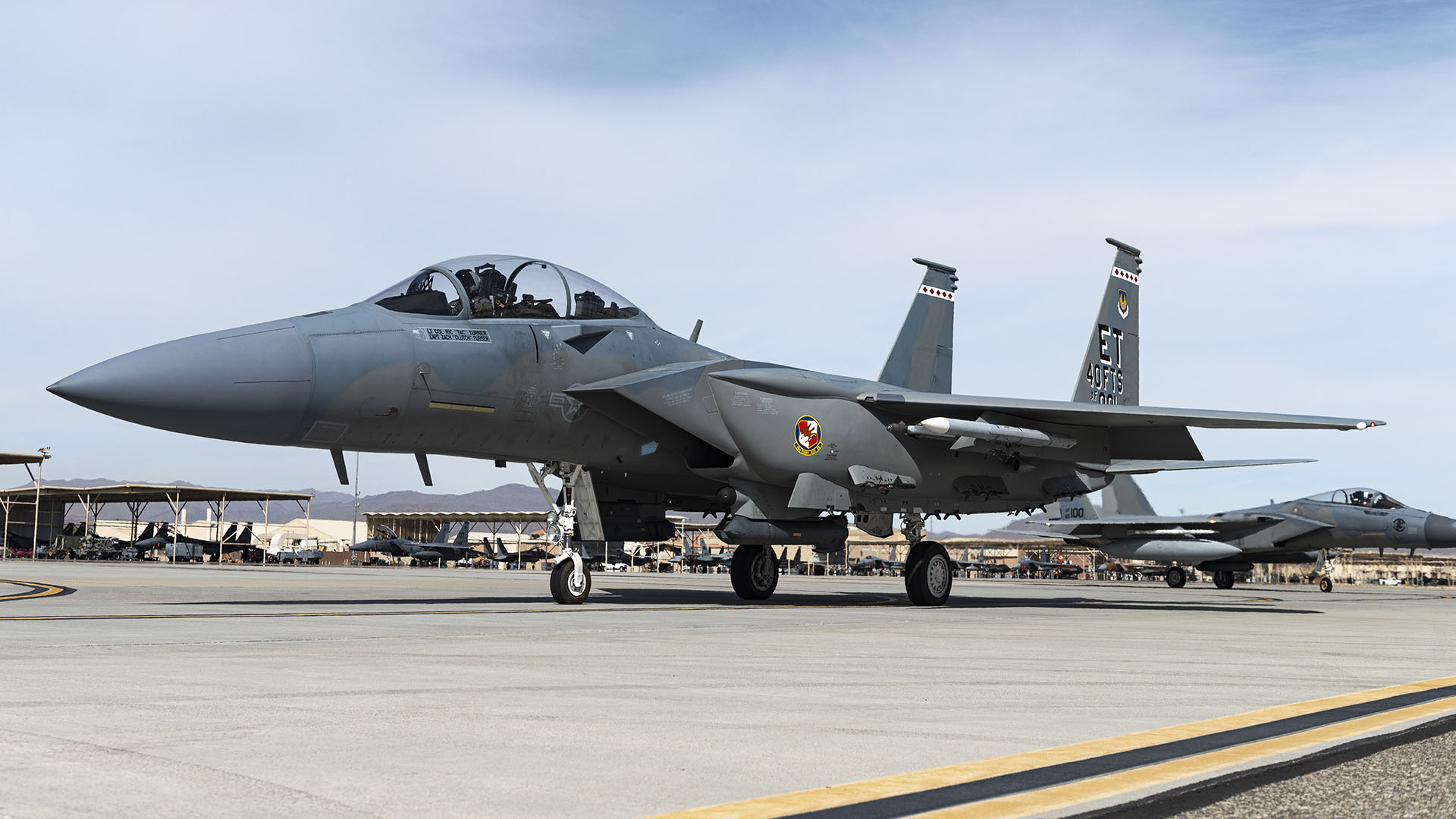President Donald Trump made a surprise announcement today at Selfridge Air National Guard Base in Michigan, which was losing its A-10 Warthogs to retirement, and possibly its tactical flying mission overall. Instead, the storied base and the 107th Fighter Squadron have been chosen to receive a squadron of Boeing F-15EX Eagle IIs. The news comes just a day after billions of dollars were earmarked for accelerating F-15EX acquisitions in a massive defense spending boost proposed by the heads of the House and Senate Armed Services Committees. Still, there are big questions of where these jets are coming from, as well as what exactly this means for the F-15EX basing structure and its future numbers in the Air Force overall.

Trump visited Selfridge Air National Guard Base today to deliver the very welcome news that the installation will not lose its fighter mission. Instead, it would grow with a new and far more advanced aircraft than the base’s Warthogs. A squadron of KC-46 Pegasus tankers is already slated to call the base home towards the end of the decade, replacing the KC-135Rs stationed there now.
This is a major economic win for Michigan, and politicians and community leaders on both sides of the political aisle are lauding Trump’s reprieve for the base’s fighter mission. Trump said today that Michigan Governor Gretchen Whitmer, who is a member of the Democratic Party, made her controversial visit to the White House earlier this month “to save Selfridge.”
What remains unclear is where the new F-15EXs will come from. As it sits now, roughly all the F-15EXs allotted under the 98 airframe procurement program of record have a future home. Each squadron would be made up of 18 jets, a reduction from the roughly 21 F-15C/Ds found today at units that still fly the older aircraft. Oregon, California, and Louisiana would all get one squadron, replacing their F-15C/Ds. Kadena Air Base on the Japanese island of Okinawa has at least been loosely understood to be in line to get two squadrons. This would leave eight aircraft for testing, training, and reserve. Now with the added 21 jets for Selfridge, either those assignments are changing or more F-15EXs are being bought.
The latter is very possible, as indicated by the $3.1B set aside “to increase production” of the F-15EX in the recently proposed $150B defense spending package. However, it still isn’t clear if those funds would be used to accelerate and fund current procurement plans or to expand them, although buying more jets seemed more likely. You can read all about this in our write up on it here. So, with yesterday’s budgetary news and today’s basing announcement, more F-15EXs appear to be planned for.

This would make a lot of sense based on the issues surrounding such a small force, the unique capabilities and efficiencies the F-15EX brings to the table, the popularity of the jet among key commanders, its testing performance, and especially the growing threats abroad. You can read more about the case for a larger F-15EX fleet in this past feature of ours.
Alternatively, it’s possible that Kadena is now going to get just one squadron of F-15EXs instead of two, with those 18 jets going to Selfridge, plus three from the remaining eight testing, training, and spare aircraft pool. The 21-aircraft squadron structure for Selfridge — adopting the same inventory number as the F-15C/D force — is also curious. This could indicate that all F-15EX squadrons will gain three more jets under a larger overall buy. This would allow for 18 primary aircraft and three retained by each unit as backup inventory aircraft.
If Selfridge’s F-15EXs are truly in addition to the 98 jets the Air Force currently plans to order, we also don’t know if other squadrons will follow. Doing so would grow the overall program of record significantly. Originally, the minimum procurement target was 144 Eagle IIs.
Finally, it’s worth mentioning that the F-15EX is primarily seen as an air defense asset, at least for now. F-15C/Ds tasked with that mission for homeland defense have been arrayed along the country’s coastlines, protecting from threats emanating from the maritime domain. Not since the short-lived Montana F-15C/D unit (120th Fighter Wing) was shuttered nearly a decade and a half ago have operational air superiority Eagles been stationed elsewhere in the country. So, regaining an Eagle squadron that is positioned for northern air defense is an interesting development.
We have reached out to the USAF for clarification on the questions laid out here, and it’s worth noting that if these are extra jets, the spending bill that could help fund them still has to be passed and signed into law in order to definitively say this is a done deal.
Contact the author: Tyler@twz.com
